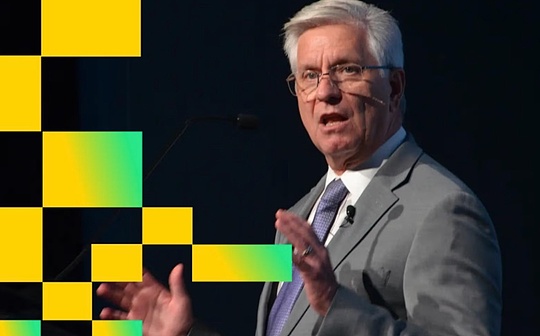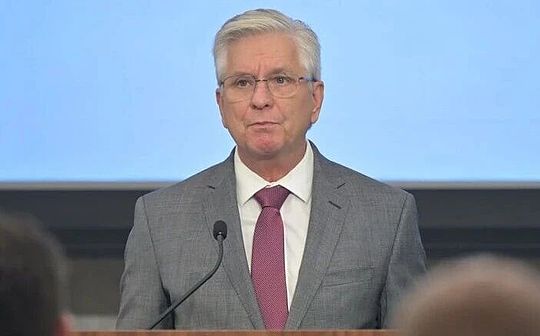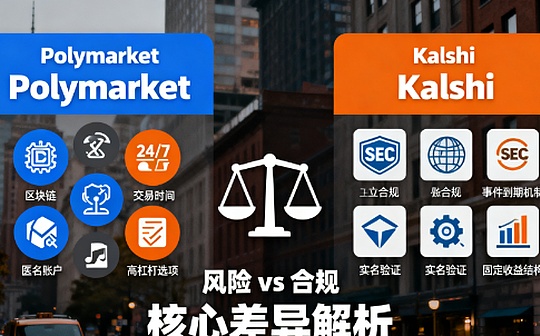
source:Federal Reserve official website, Compiled by: Bitchain Vision
On October 21, local time, the Federal Reserve held a Payment Innovation Conference to discuss stablecoins, artificial intelligence, and tokenization. Christopher J. Waller, Governor of the Federal Reserve, delivered a speech titled “Embracing New Technologies and New Participants in the Payment Field.”Waller said in his speech,The Federal Reserve has proposed a new restricted master account (called a “Lite Master Account”) that would allow all legal compliance agencies to directly access the Fed’s payment system without relying on partner banks.This Lite Master Account does not offer all the services of a full Master Account, such as the ability to borrow from the Federal Reserve, but every legally compliant entity can apply and the legal rules for eligibility will not change.This move will allow the Fed to green light innovative banks, fintech companies, stablecoin issuers and other payment companies.
Crypto journalist Eleanor Terrett commented that this move is of great significance to companies such as Custodia Bank and Kraken, which have been trying to obtain the Fed’s main account for many years, and Custodia even took the Federal Reserve to court.In addition, companies such as Ripple and Anchorage that applied this year may also accelerate their access.
The following is the full text of Waller’s speech:
Thank you Susan and good morning everyone.Welcome everyone to the Federal Reserve Board for our first-ever Payments Innovation Conference.My purpose for hosting this conference is two-fold.First, I want the meetingAbility to spotlight new technologies in the decentralized finance (DeFi) and cryptocurrency space and how they are entering the mainstream payments ecosystem.My goal is to start a vibrant discussion about the payments space between traditional payments giants and new entrants in the DeFi space.Secondly, I want to convey a message:The Federal Reserve ushered in a new era in payments—the DeFi industry is no longer viewed with suspicion or contempt.Today, we welcome you to join us in discussing the future of payments in the United States—one that was unimaginable just a few years ago.
As we all know, we are in the midst of a technology-driven payments revolution, and I am here to say that the Federal Reserve intends to be an active participant in this revolution.
Many technological advancements are changing the payment system.Stablecoins and tokenized assets take advantage of distributed ledger technology, the rapid adoption of artificial intelligence (AI), and these innovations are becoming increasingly integrated with traditional financial ecosystems.This includes the institutions and infrastructure that have long supported our economy’s secure and efficient payments system.Yes, the Federal Reserve plays a big role in this too.This revolution in changing the payment system is requiring changes in every aspect, and I will detail later some of the new ideas the Federal Reserve is working on to support these innovations.
I’ve talked before about the two main models I see for payments innovation in market economies.The first model is private sector-led innovation.Most innovation comes from the private sector, which is proactive and best able to allocate resources and take risks to explore new technologies.The second model is for public sector entities such as the Federal Reserve to build platforms and provide services that enable the private sector to more easily and quickly deliver new services to their customers.This model should be pursued on rare occasions and when required by a limited, specific market.Public institutions, including the Federal Reserve, should recognize and embrace private sector innovation that improves the payment system while maintaining its security and stability, which is critical for both new generations of innovators and traditional institutions.
Let me back up for a moment and review how we got to where we are today.Since the Federal Reserve was founded, it has worked with the private sector to make payments and settlement systems more efficient.From the beginning, the clearing services provided by the Federal Reserve eliminated the need for daily shipments of cash in armored vehicles and armed guards.Long before we started talking about the “payments rails” that enabled the kind of innovation we’ll discuss today, the Federal Reserve was running trains on steel rails to deliver and clear paper checks that circulated across the country.The Federal Electronic Funds Transfer System (Fedwire) began transmitting money between banks over telegraph wires in the early 20th century.Fast forward to today and we have multiple infrastructures in place to settle bank-to-bank transfers in real time.
Today’s conference will focus on private sector-driven innovation.We feature 100 private sector innovators who are leveraging cutting-edge technology to create new possibilities in payments.Our panelists are working on integrating traditional financial payment channels with distributed ledgers, developing new products and services in the digital asset ecosystem, and applying artificial intelligence in payments.
Notably, companies participating in these activities include banks, asset managers, retail payments companies, technology companies, and crypto-native fintech companies.This shows that distributed ledgers and crypto-assets are no longer on the fringes, but increasingly integrated into the architecture of payments and financial systems.
Before I hear from these innovators, I want to talk about the Federal Reserve’s role in supporting the private sector.These roles include acting as a convener to resolve coordination issues, as well as operating core payments and settlement infrastructure.We are also looking to the future, conducting practical research into tokenization, smart contracts, and the intersection of AI and payments for use in our own payments systems.We do this to understand the innovation happening within the payments system and to assess whether these technologies offer opportunities to upgrade our own payments infrastructure and enable us to have deeper conversations with industry about these new technologies.
While this is a good start, I believe we can and should do more to support those institutions actively driving the transformation of payment systems.For this I have requestedFed staff examines concept of what I call “payment account”.Currently, the Federal Reserve provides master accounts and financial services to legally qualified entities by following our Account and Service Request Evaluation Guidelines.The payments account will be open to all legally qualified institutions and will benefit those primarily focused on payments innovation.
This payment account concept is designed to provide basic Federal Reserve payment services to statutorily qualified institutions, these institutions currently mainly provide payment services through third-party banks with complete master accounts.Many qualified institutions that engage in significant payments activity may not need all the features of a master account, nor access to the full suite of Federal Reserve financial services, to successfully innovate and serve their customers.ourThe goal is to tailor services for these new accounts based on the needs of these institutions and the risks they pose to the Federal Reserve Bank and the payments system.Therefore, it is important toThe review process for these low-risk payment accounts will be streamlined.Payments innovation is advancing rapidly, and the Federal Reserve needs to keep pace.
To be more specific, let me describe a possible prototype of such a payment account (what I sometimes call a “lite” master account).The account will provide access to the Federal Reserve’s payment system while controlling various risks to the Federal Reserve and the payment system.To control for the size of the account and its impact on the Fed’s balance sheet,The Reserve Bank will not pay interest on payment account balances and may impose balance caps.These accounts do not have daytime overdraft privileges – if the balance reaches zero, payment requests will be denied.They will not be eligible to borrow from the discount window and will not be able to use all Fed payment services, because the Reserve Bank cannot control the risk of intraday overdrafts.I want to make it clear that this is just a prototype idea to illustrate how things might change.All in all, it seems to me that the payments landscape, as well as the types of providers, have changed dramatically in recent years, and therefore, new payment accounts can better reflect this new reality.
As Fed staff examines this idea, we will communicate with all interested stakeholders to hear their views on the pros and cons of this option.
I’ll wrap it up here and let’s get to the really exciting part of this conference, which is about innovation and the future of payments.Thank you to all the guests who took the time to participate, and thank you to the audience and the many friends who watched online.Special thanks go to the Fed staff for working quickly to get this meeting in place ahead of the Fed’s busy fall schedule.The meeting continues!








